Our adventure into the Caucasus mountains begins in true Georgian style - hurtling across the countryside in a marshrutka (public minivan) driven by a man with very little regard for speed limits.
As loud Georgian pop music assaults our ears, we gaze north out the window at a wall of grey-green mountains looming larger, knowing that soon our legs will be powering us up into that vast unknown.
We book to stay the night in Telavi, a quaint town of cobbled streets at the foothills of the Tsiv-Gombori Range. It’s dark when our driver drops us on the roadside and we assemble our bikes and ride to Dima’s Guesthouse, where we wheel through an entranceway draped in grapes and kiwifruit. I’d called ahead to let our elderly host know we’d be late, and her son answers. He immediately picks up my accent and informs me that he LOVES rugby, something I knew was a commonality between Kiwis and Georgians. However, I only recently learnt that the latter has been playing a full contact ball game since the 12th century. It’s called lelo burti and the leather ball was packed with sand and apparently doused in wine.
Our host welcomes us warmly with a bottle of her husband’s wine which we drink on the terrace while chatting to her about everything from Georgia’s Soviet era (she screws up her face at the memory) to Georgian literature (herself being a retired professor of the arts), to the fact that many young people are choosing not to have children (a notion that alarms her - “what will they do in their life? Travel? Go to the cinema?!”)

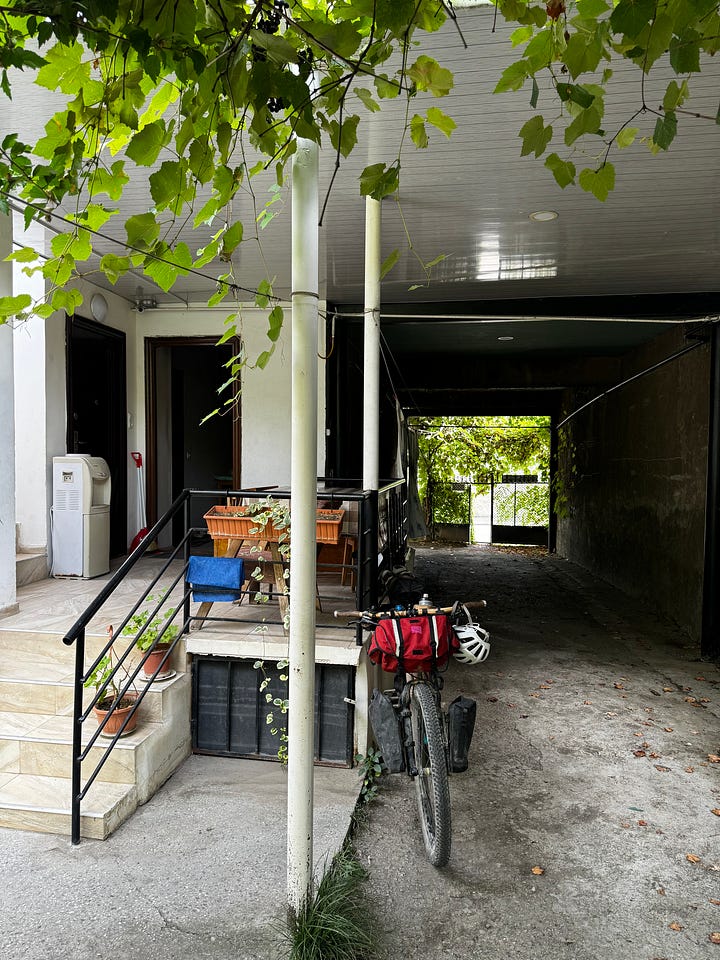
As we finish our second glasses of her husband’s Qvevri wine (made using the ancient method of fermenting the grapes and skins in a clay pot underground) I ask her to please let him know it’s delicious. “He knows,” she replies, before bidding us good night.
The following morning we leave Telavi headed for the mountains, stopping twice due to a puncture for Cael which conveniently allows me a stop at a hole-in-the-wall bread (puri) shop.
Everyone with a slice of land in Georgia seems to grow grapes, and the houses we pass are all but obscured by vines heavy with dark red bunches. There are persimmons, peaches and plums too, and rows of corn stretching over the bleached fields.
We eventually reach the forest cloaking the lower reaches of the ranges, and join the road that follows the river into the mountains. Checking the map we discover the next flat place to be roughly 800m of climbing, so we find a grassy spot to camp, opting to tackle the big ascent with fresh legs. As we pitch our tents and gather wood for a fire we notice the previously blue-grey river has turned a turbid brown. There’s work underway upstream to improve the road, and environmental regulations here are depressingly meagre, often causing Cael to avert his environmental engineer eyes.
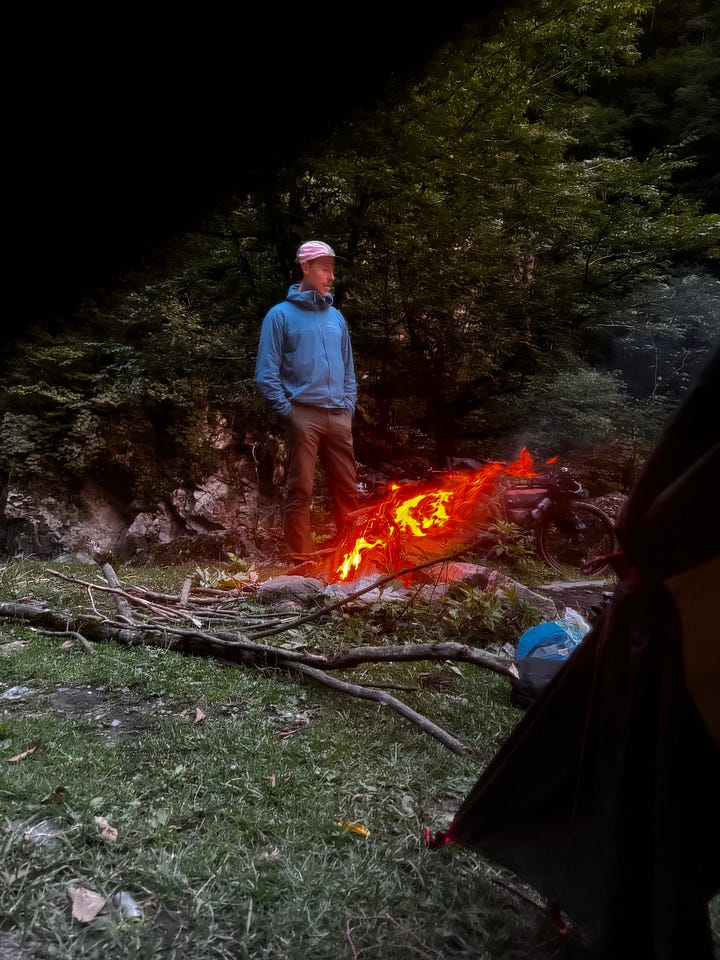
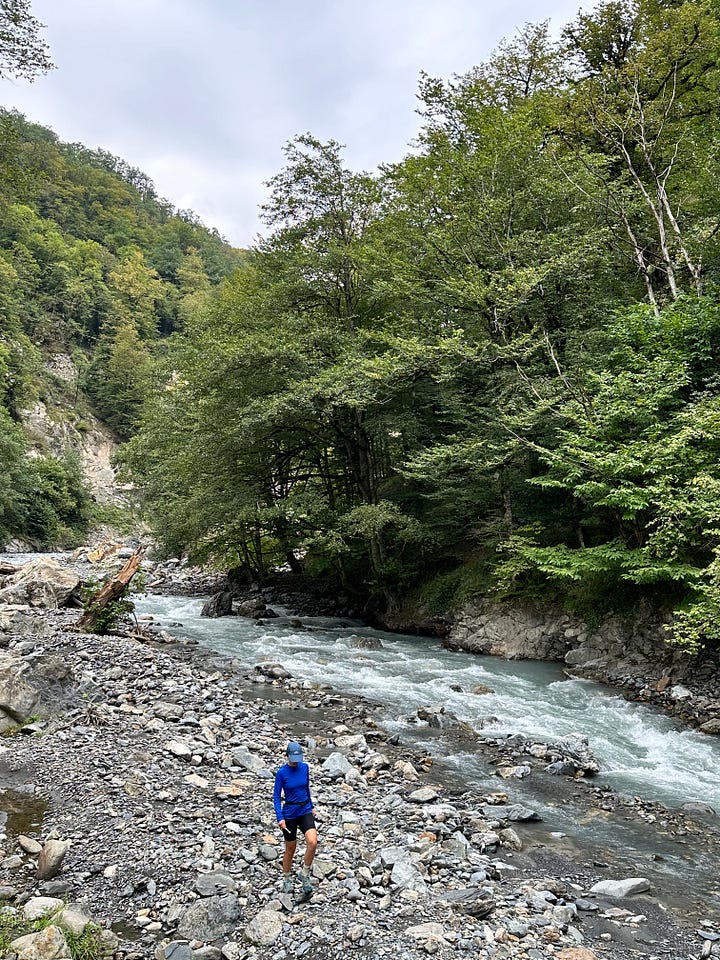
The following morning has us immediately starting the gradual climb up to Abano Pass. The forest is thick and lush, and quickly the gorge narrows to a treacherous chasm plummeting down from the road’s edge. In places the road surface turns to solid, jagged rock, while in others it’s clearly been rebuilt after a landslide and its banks look raw.
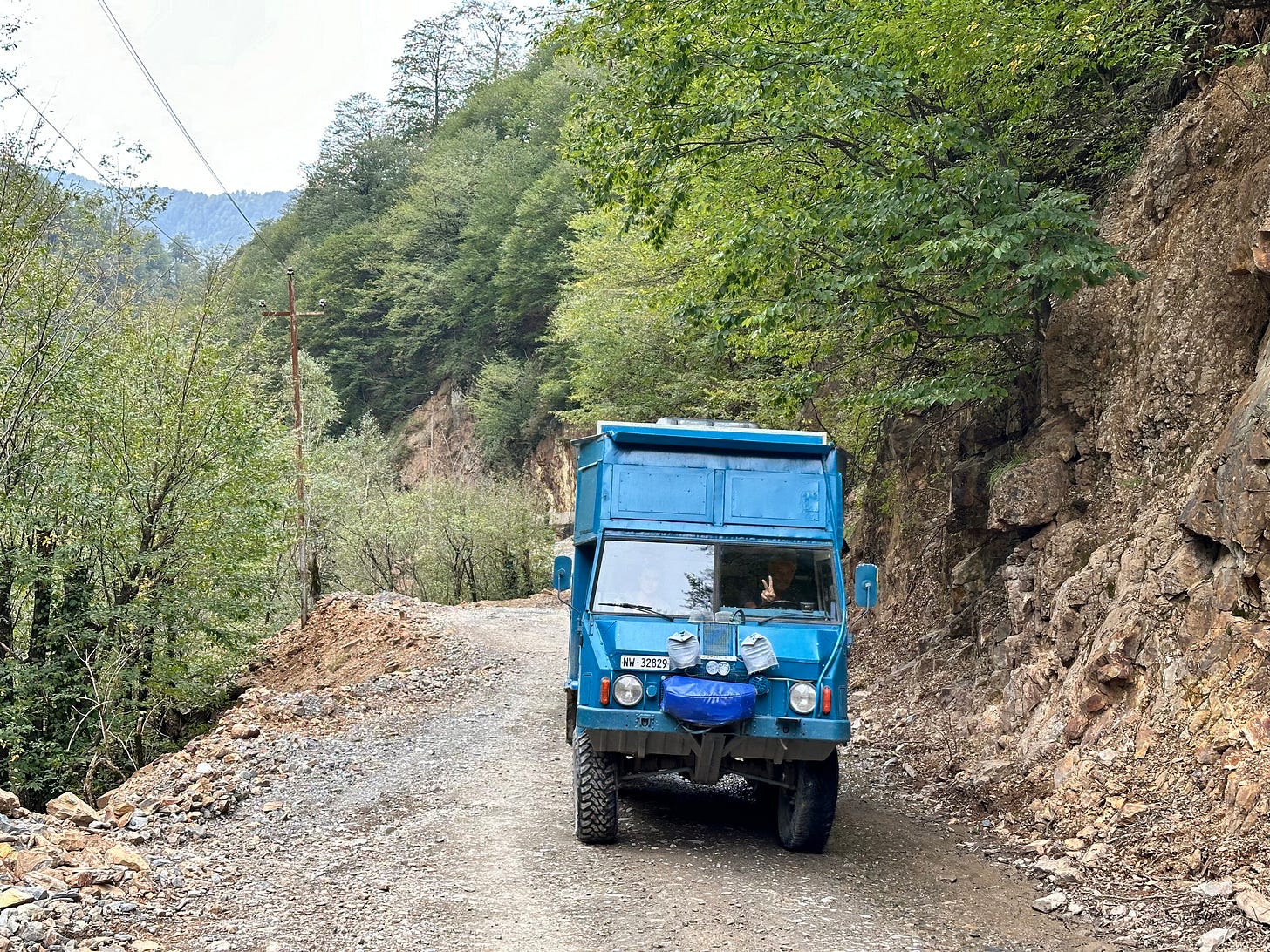
It’s reputedly one of the world’s most dangerous roads, and I feel relieved we are navigating it slowly by bicycle rather than having to manoeuvre a vehicle around its perilous hairpins and along its sheer drop offs.
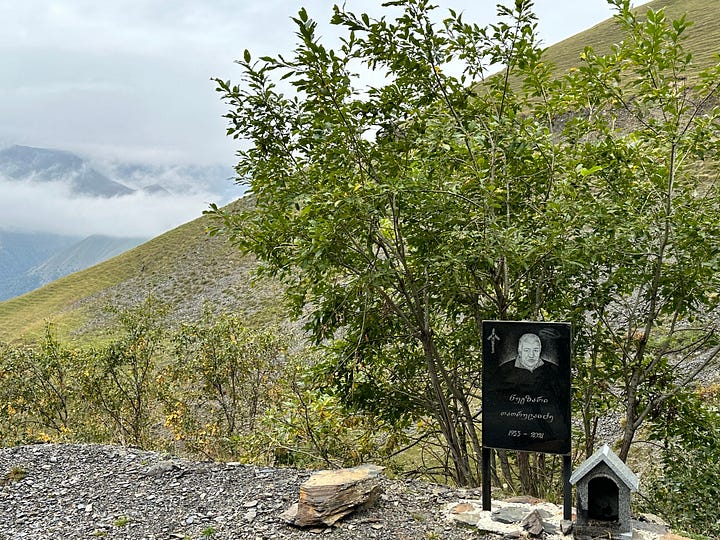
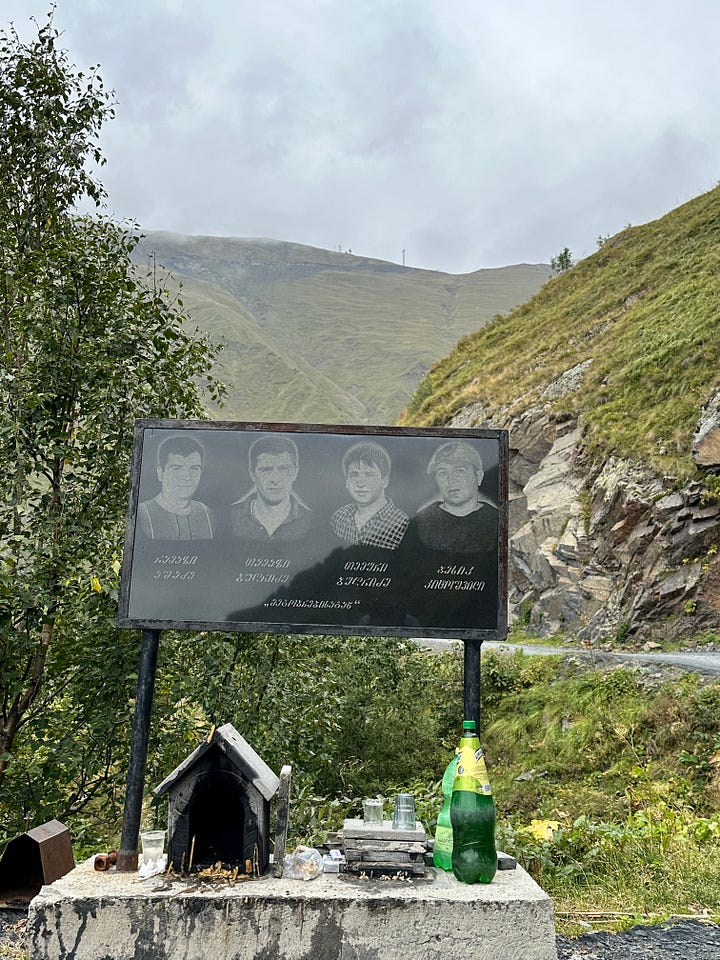
We encounter countless memorials to souls who haven’t survived the journey, marked by granite monuments bearing etchings of their faces. A macabre detail of these monuments is that some of them also depict an etching of the vehicle the people or person was travelling in. At a memorial for a child, there’s a car seat propped next to it. And at the most recent memorial, in January this year, we can see the wreckage of the poor man’s car at the bottom of the ravine. It’s a reminder of how seriously to take this road, but we later learn that much of these accidents involved a drunk driver.
If there’s one thing I can never overlook it’s a hot spring, regardless of the sweat and tears required to get there.
We discover one on the map and after several hours of slow progress up the interminable zigs and zags, a hot spring stop feels well-deserved, and we hope there might also be a flat spot to camp for the night. Upon arrival we’re met by a churlish, potbellied man who tells us the price for hot spring access before trundling back into a makeshift shelter. It’s quickly apparent there’s nowhere suitable to camp, the hot spring teetering on the cliff’s edge and the road sharp with blast rock, but we decide to deal with that problem after soaking our weary bodies.
The mineral rich water isn’t as hot as I’d like, but as we sit in the bath looking out to the spectacular valley through a grimy window, it fills up to our chins, pumped from an unknown source. We spend about two hours turning wrinkly and relaxed until finally accepting the need to get dressed and continue on to find somewhere to camp.
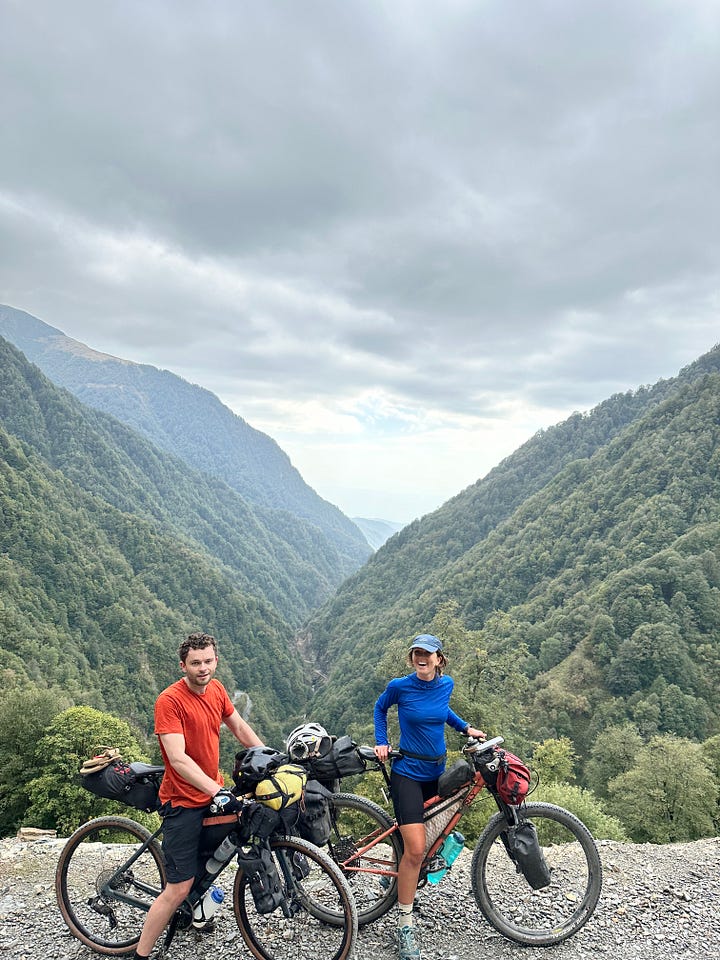
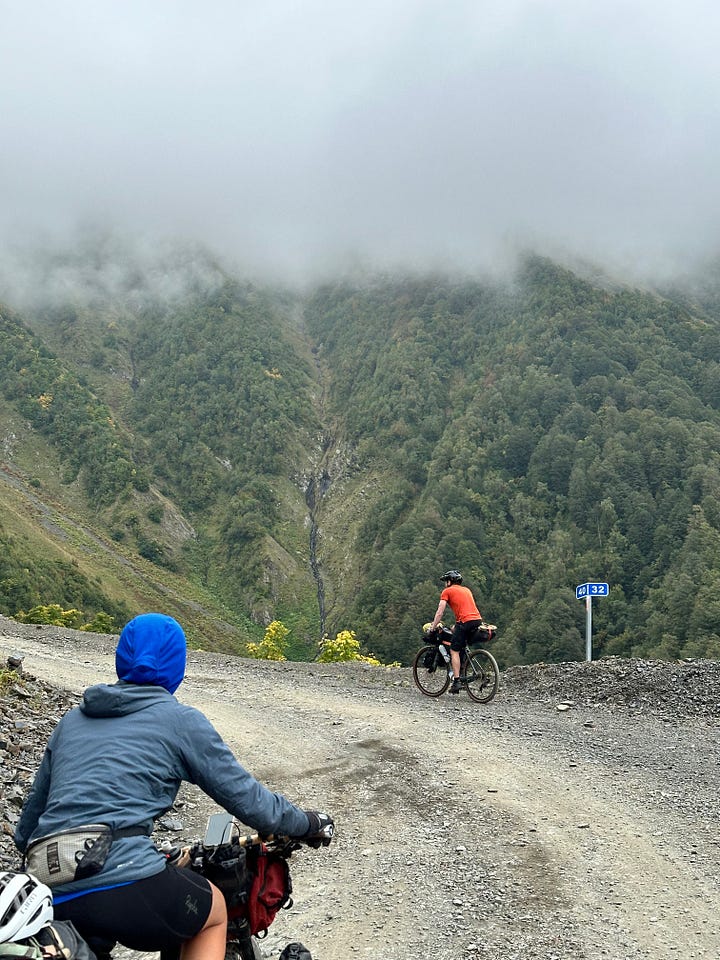
We quickly realise the narrow road carved into a steep mountainside doesn’t offer up many suitable camping spots, and that trying to ride a heavy bike up a steep incline after a lengthy marination in warm water leads to light headedness that isn’t assuaged even by scoffing a Snickers bar and Pic’s peanut butter sachet.
Thankfully, after only a few more kilometres we find a corner with a patch of grass big enough for two tents. It’s also the site of a memorial to three more guys, a fact we try not to dwell on, especially as our tents are square in the path of any downhill-travelling vehicle that happens to lose control on the corner. Later, just as we’re drifting off, a vehicle comes screeching down the road and we lie rigid as its headlights beam through our tents, breathing a sigh of relief as it safely rounds the bend.
The following morning we meet a brigade of herdsmen on a hairpin bend who are taking their morning smoko. It’s getting to the time of year when the men who spend summers grazing their animals in the mountains head back down to lowland villages for the winter.
These guys are rugged characters, whose diet likely consists of bread, cheese and Chacha and probably slept outdoors last night with little in the way of warm gear. We have no language crossover but they exude a gruff graciousness and one gestures that I clamber onto his horse, whose mane is a tangle of prickly seedheads.
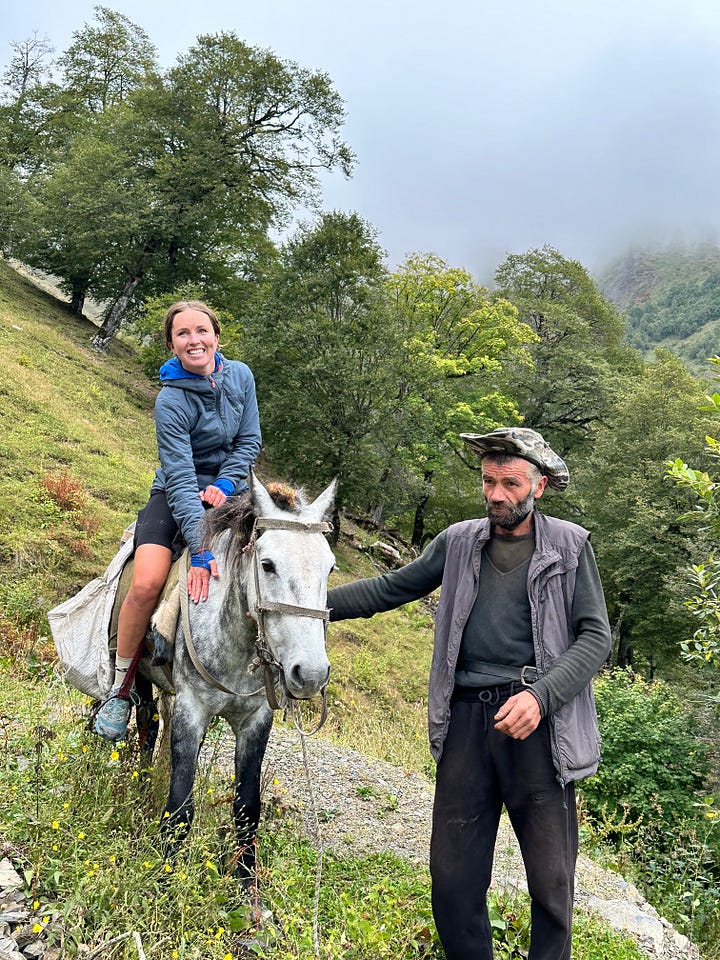
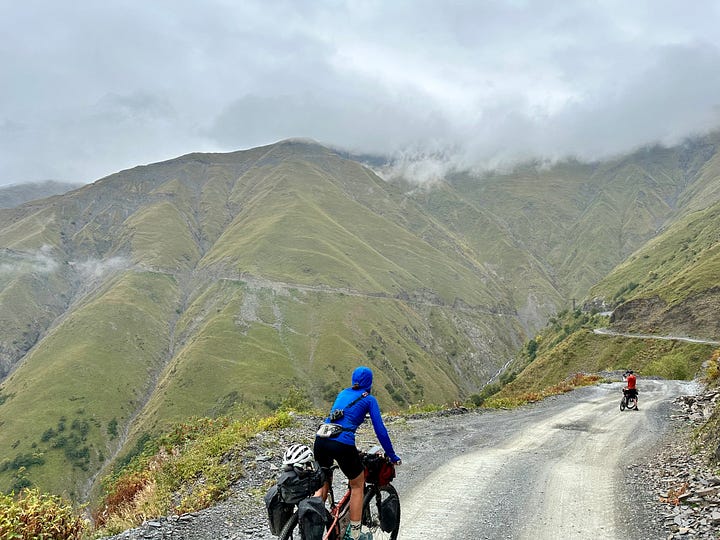
The morning is spent climbing towards the wisps of cold cloud that hang around the tops, watching the tiny road ribbon back into the depths of the darker green valley behind us. We’re puzzled by lone, rusty pylons standing like sentries in a trailing line up the mountainside, then later realise they’re a relic of when the Soviets installed electricity to Tusheti in the 70s, now long abandoned.
Finally we look up to see only five switchbacks remaining until Abano Pass, where I’d read on a crowd-sourced map app there was a “cafe” selling “delicious homemade cakes” - a fact I found difficult to believe given the remote location, but nevertheless used to fuel the group’s morale. As everyone funnels their remaining energy in the final stretch of pedalling, I’m hopeful the cafe still exists because I’ve really talked up the prospect of cakes.
Thankfully, as we crest the pass and roll around a corner, there in all its glory is the cafe, a shipping container with a chimney puffing smoke in a cheerful, homely gesture of welcome. We discard our bikes and buy cappuccinos, lobiani (bean pie), and huge wedges of blueberry, raspberry and peach cake still warm from the oven.
After handing over a sizeable wad of our cash to the enterprising mountain top cafe owner, we begin a steep descent into a wall of thick, cold fog.
It soon clears for us to enjoy a screamer of a downhill, surrounded by peaks cut with diagonal razor blades of limestone while sunlight dapples aspen forests turning gold for autumn.
The valley floor leads us into an impressive gorge which we follow for 10km until the final hill to climb before reaching Omalo - the biggest of the tiny villages in Tusheti, where the snowy ranges to the north mark the border with Russia.
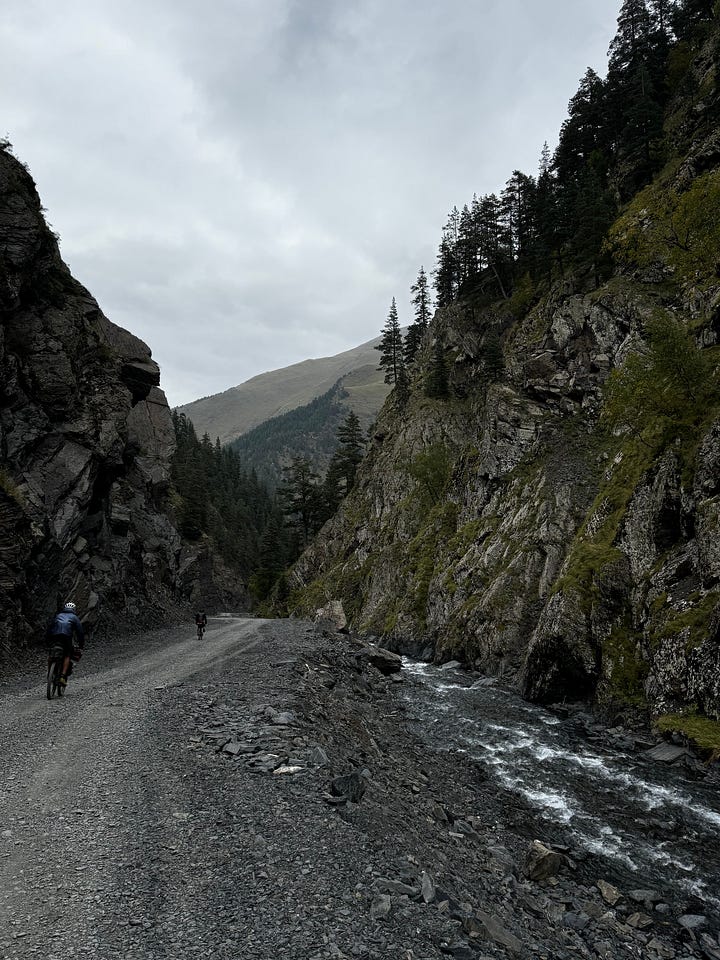



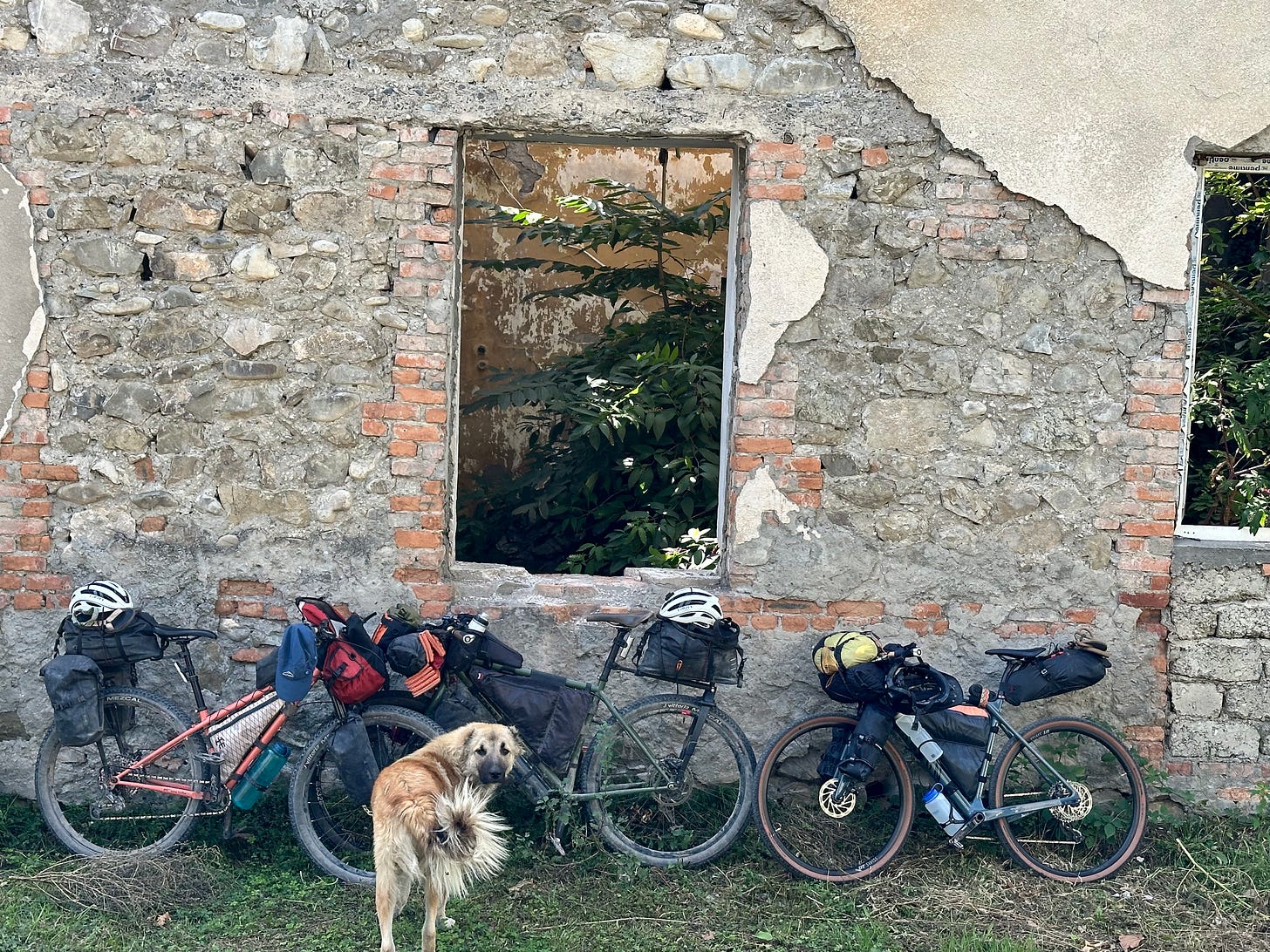





Good grief Isobel. Thats gnarly stuff again. Thanks for the story and great photos!!